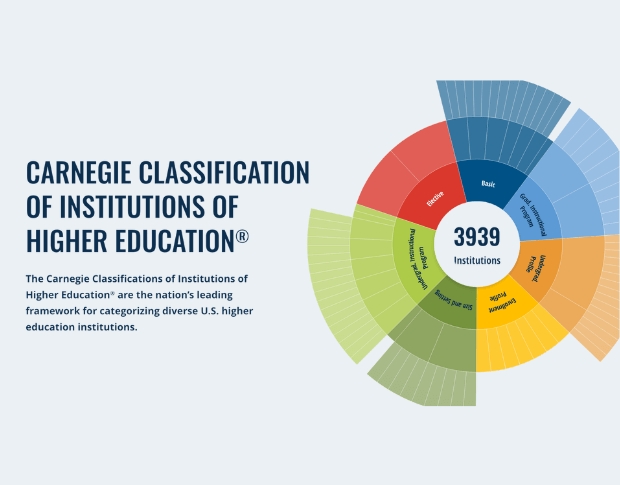This blog is part of a series that identifies and discusses practical issues that arise in initiating networked improvement communities (NICs). Contributors to this series have largely oriented in to the core work of NICs, in an effort to provide practical guidance to those seeking to launch networks. Their understandings are well represented in the five-point NIC Initiation Framework, in the first-hand accounts of those who have initiated NICs, and in different analytic perspectives that can be used to make sense of these exciting but unfamiliar enterprises.
Yet, it is equally important that those leading and managing NICs also develop the dispositions, knowledge, and capabilities to orient out to the environments in which these networks emerge and operate. By “environments,” I mean policy, political, and economic environments at the local, state, and national levels.
My central point is this: If NICs are at all like other large-scale educational improvement strategies, these environments can do much to enable, constrain, and complicate their work.
If NICs are at all like other large-scale educational improvement strategies, these environments can do much to enable, constrain, and complicate their work.
For example, these environments provide much of the funding needed to initiate NICs, often in the form of competitive grants. They legitimate and privilege particular educational problems as needing attention, such as early reading, behavioral supports, and college and career readiness. They often establish at least some of the terms of success, both through evaluation requirements tied to competitive grants and state-level accountability systems.
At the same time, while the work of initiating and sustaining NICs benefits from stability and patience, the environments in which they operate are famously fragmented, uncoordinated, and unstable and, thus, a tremendous source of uncertainty. Expectations and resources for educational improvement are in a constant state of flux at all levels of government (local, state, and national) and beyond the bounds of government (among activists, researchers, professional organizations, non-profit and for-profit organizations, and philanthropists).
All of this places demands on network leaders to scan, interpret, and selectively address potentially-salient activity as it plays out both within and beyond the K-12 governance structure. The longer a network operates — the larger the scale and the broader the geographic distribution — the more challenging this work becomes.
From the preceding follows the need for an uncommon sort of ambidexterity. On the one hand, network leaders must orient in and focus on establishing and coordinating capabilities for continuous learning and improvement among participants in the network. On the other hand, managers must orient out so as not be passive recipients of their environments, but rather proactive and strategic in engaging their environments in ways that maintain the performance and viability of their networks. In the words of educational researchers Meredith Honig and Thomas Hatch, managers must selectively bridge (or embrace) environmental activity that advances the network’s mission and buffer (or shield) environmental activity that complicates the network’s mission.
As they begin to orient out, it is particularly important for network leaders to track system-level infrastructure supporting the development of large-scale educational innovations. By “infrastructure,” I mean political and policy supports for educational innovation, along with the philanthropic, private, and professional supports that emerge in response to these.
As they begin to orient out, it is particularly important for network leaders to track system-level infrastructure supporting the development of large-scale educational innovations.
Network leaders must recognize that these environments are not yet entirely NIC-friendly. The past 20 years has seen the emergence and rapid maturation of an “impact infrastructure” supporting effective, scalable innovations able to quickly demonstrate positive program impact through rigorous evaluations. This infrastructure includes:
- Political support for evidence and accountability in educational innovation.
- The creation of federal agencies and grant programs focused on establishing scientific knowledge of “what works” to improve student outcomes.
- Philanthropists advancing their own research-based and evidence-based grant programs.
- Private research firms with highly-developed capabilities for program evaluation.
- Professional associations charged with advancing the development and use of innovative statistical methods and procedures.
At the same time, “improvement infrastructure” is comparatively weak. Politically, there is little understanding of large-scale educational innovation as uncertain, complex work, and there are few policy initiatives that support the type of continuous learning and improvement needed to address uncertainty and complexity. Instead, the primary support for continuous learning and improvement in educational innovation arises from a small nucleus of philanthropists, private firms, and professional associations, with the Carnegie Foundation for the Advancement of Teaching leading the charge. NICs are integral to a bottom-up, counter-cultural reform movement that recognizes that positive program impact is predicated on continuous learning and improvement among diverse communities of practitioners and researchers organized around common problems of practice.
It would be prudent for network leaders to recognize this uncertainty in system-level infrastructure supporting educational innovation. But network leaders should not accept this uncertainty as a given, as network leaders are, again, members of a broader community driving change not only in their own networks but also in the broader environments in which they operate.
And from this follows two practical recommendations for network leaders. The first is to recognize that, for many networks, funding and legitimacy will likely be tied to expectations that they will quickly demonstrate positive impact on student outcomes. This requires not only beginning with the end in mind, but also specifying intermediate outcomes that establish realistic expectations for network development and serve as “leading indicators” of the potential for the network to achieve its goals. The NIC Initiation Framework delineates five possible leading indicators that could be used to calibrate expectations and chart development.
The second recommendation is for NIC leaders to collaborate with philanthropists, private firms, and professional associations to press on political and policy environments in an effort to strengthen the “improvement infrastructure” supporting their joint work. Just as continuous learning and improvement benefit from collaboration and collective action, so too will efforts to influence political and policy environments benefit from organizing into coherent coalitions.
Indeed, among NICs, an essential adage is that there is strength in numbers — both in orienting in to address shared problems of practice and in orienting out to address shared challenges in environments.
February 25, 2016
The fifth post in our series on the initiation networked improvement community explores what lessons can be taken from other similar efforts outside of the education industry, primarily pop up businesses.
March 17, 2016
In this AEI report, Alan Ginsburg and Carnegie Senior Fellow Mike Smith analyze 27 RCT mathematics curriculum studies contained in the What Works Clearinghouse, and they find serious threats to the usefulness of all 27.







